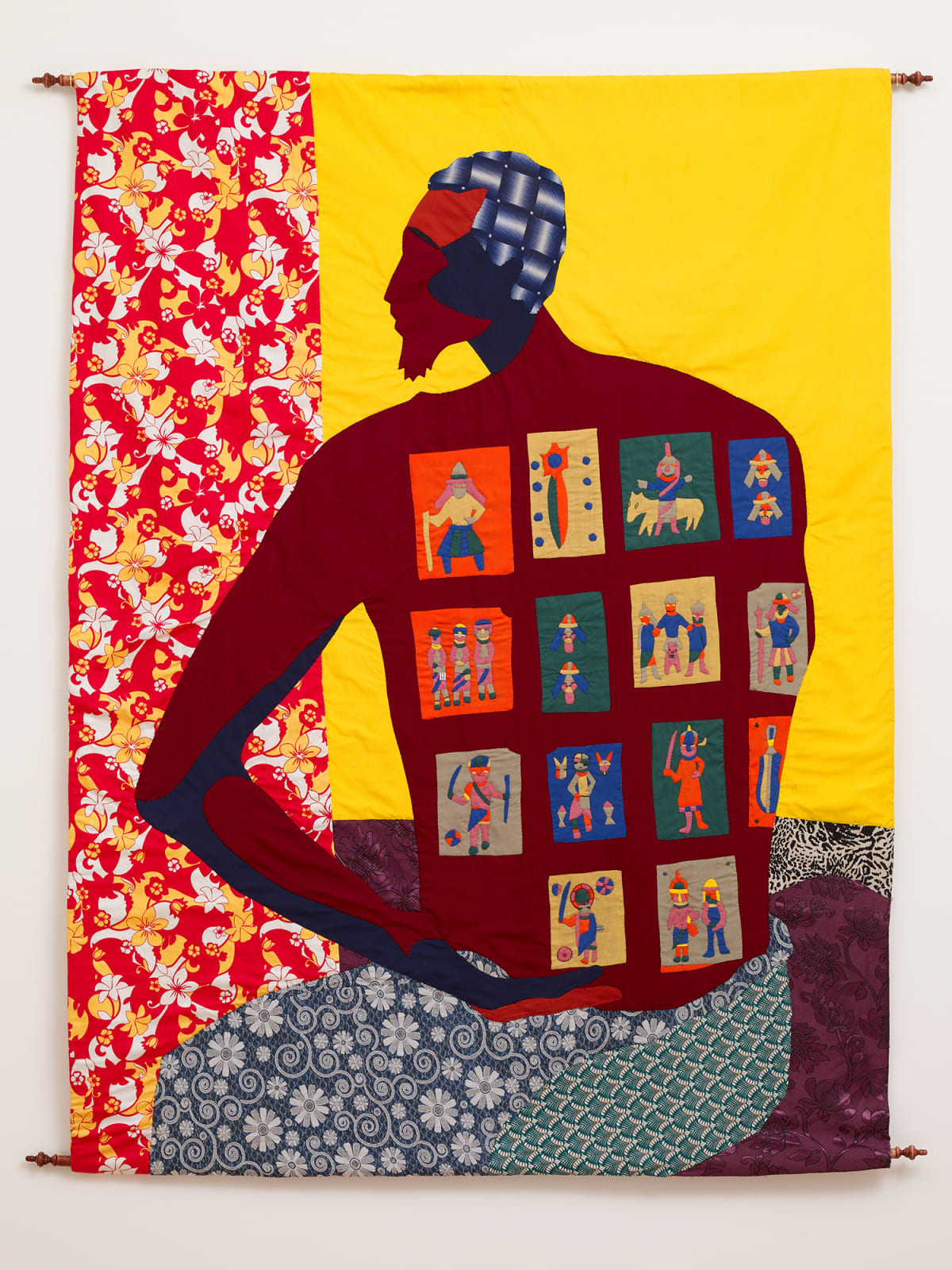-
Artworks






Whipped Peter and the Bronzes, 2021
Appliqué textile78 x 60 in.
198.1 x 152.4 cmSoldFurther images
The photograph of a formerly enslaved man, layered in scars from whippings, was seared into the American consciousness in the 1860s after being published in Harper’s Weekly. While there are...The photograph of a formerly enslaved man, layered in scars from whippings, was seared into the American consciousness in the 1860s after being published in Harper’s Weekly. While there are varying stories of the identity of the man in the photo—named variously Gordon or Peter—what is known is that he posed for this kind of picture numerous times, understanding that his scars and their depiction would be used to make a larger statement against the practice of slavery as an institution. He stood as a living testament to the horrors of one of the first truly global economic systems. Similarly, the Benin Bronzes are born from the same global economic system, material evidence of the international trade in human bodies. They depict great men and women of the Benin culture as well as Portuguese slave traders. "Whipped Peter and the Bronzes" is a layered exploration of the inextricably intertwined nature of this global trade, and the material traces it leaves behind.











